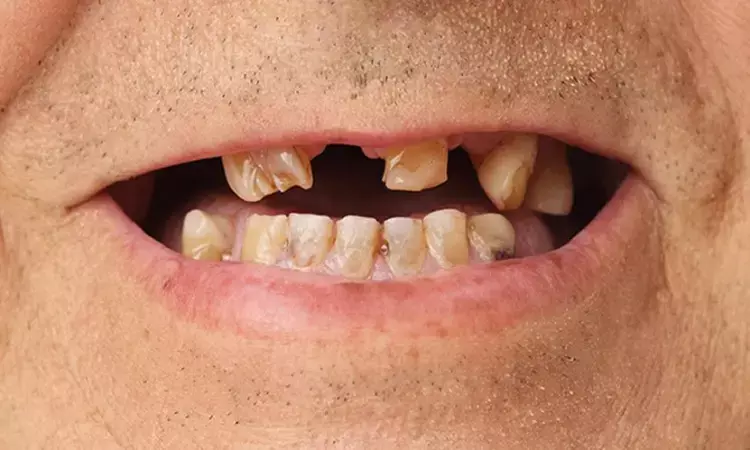- Home
- Medical news & Guidelines
- Anesthesiology
- Cardiology and CTVS
- Critical Care
- Dentistry
- Dermatology
- Diabetes and Endocrinology
- ENT
- Gastroenterology
- Medicine
- Nephrology
- Neurology
- Obstretics-Gynaecology
- Oncology
- Ophthalmology
- Orthopaedics
- Pediatrics-Neonatology
- Psychiatry
- Pulmonology
- Radiology
- Surgery
- Urology
- Laboratory Medicine
- Diet
- Nursing
- Paramedical
- Physiotherapy
- Health news
- Fact Check
- Bone Health Fact Check
- Brain Health Fact Check
- Cancer Related Fact Check
- Child Care Fact Check
- Dental and oral health fact check
- Diabetes and metabolic health fact check
- Diet and Nutrition Fact Check
- Eye and ENT Care Fact Check
- Fitness fact check
- Gut health fact check
- Heart health fact check
- Kidney health fact check
- Medical education fact check
- Men's health fact check
- Respiratory fact check
- Skin and hair care fact check
- Vaccine and Immunization fact check
- Women's health fact check
- AYUSH
- State News
- Andaman and Nicobar Islands
- Andhra Pradesh
- Arunachal Pradesh
- Assam
- Bihar
- Chandigarh
- Chattisgarh
- Dadra and Nagar Haveli
- Daman and Diu
- Delhi
- Goa
- Gujarat
- Haryana
- Himachal Pradesh
- Jammu & Kashmir
- Jharkhand
- Karnataka
- Kerala
- Ladakh
- Lakshadweep
- Madhya Pradesh
- Maharashtra
- Manipur
- Meghalaya
- Mizoram
- Nagaland
- Odisha
- Puducherry
- Punjab
- Rajasthan
- Sikkim
- Tamil Nadu
- Telangana
- Tripura
- Uttar Pradesh
- Uttrakhand
- West Bengal
- Medical Education
- Industry
Direct resin composite good treatment option for severe, generalized tooth wear: Study

Restoration of the worn dentition should be undertaken in an 'additive,' minimally invasive manner; this approach may also help to facilitate contingency planning. Direct resin composite can offer an acceptable medium-term option for the treatment of severe, generalized tooth wear; molar restorations may require higher maintenance, a recent study reported.
The study is published in the Journal of Dentistry.
Shamir B.Mehta et al from the Department of Dentistry, Radboud University Medical Center, Radboud Institute for Health Sciences, Nijmegen, The Netherlands carried this study to evaluate the 5.5-year performance of direct resin composite restorations, prescribed for patients with severe tooth wear, requiring full-mouth rehabilitation.
A convenience sample of 34 patients were recruited to a prospective trial. The participants were provided 1269 full-mouth direct resin composite restorations (Clearfil AP-X) by 5 experienced operators, using the Direct Shaping by Occlusion (DSO)-technique.
Treatment resulted in an increase in the vertical dimension of occlusion (VDO). Failure was assessed at three levels. Frequencies of failure were analyzed using Kaplan Meier survival curves and the effects of the relevant variables calculated with a multifactorial Cox regression (p < 0.05).
The study revealed that the annual failure rates (for all levels of failure, 'Level 3- ') of ≤ 2.2% and ≤ 2.9% were respectively reported for the anterior and posterior restorations with a mean observation time of 62.4 months.
Also, the completion of an anterior restoration with the need for further appointments resulted in significantly more Level 2- & 3- failures. An evaluation of the performance of the premolar and posterior maxillary restorations showed significantly lowered risks of certain types of failures, compared to the molar and posterior mandibular restorations.
As a result, the authors concluded that "at 5.5 years, 2.3% of the overall restorations displayed catastrophic, (Level 1) failures. Molar restorations, posterior mandibular restorations and the anterior restorations requiring two further sessions for completion, were associated with significantly higher risks for failure."
Hence, the researchers inferred that for patients with severe tooth wear, where full mouth rehabilitation was undertaken by the placement of direct resin composite restorations at an increased vertical dimension of occlusion, at 5.5 years, 2.3% of the overall restorations displayed catastrophic, (Level 1) failures.
For further reference, log into:
Dr. Nandita Mohan is a practicing pediatric dentist with more than 5 years of clinical work experience. Along with this, she is equally interested in keeping herself up to date about the latest developments in the field of medicine and dentistry which is the driving force for her to be in association with Medical Dialogues. She also has her name attached with many publications; both national and international. She has pursued her BDS from Rajiv Gandhi University of Health Sciences, Bangalore and later went to enter her dream specialty (MDS) in the Department of Pedodontics and Preventive Dentistry from Pt. B.D. Sharma University of Health Sciences. Through all the years of experience, her core interest in learning something new has never stopped. She can be contacted at editorial@medicaldialogues.in. Contact no. 011-43720751
Dr Kamal Kant Kohli-MBBS, DTCD- a chest specialist with more than 30 years of practice and a flair for writing clinical articles, Dr Kamal Kant Kohli joined Medical Dialogues as a Chief Editor of Medical News. Besides writing articles, as an editor, he proofreads and verifies all the medical content published on Medical Dialogues including those coming from journals, studies,medical conferences,guidelines etc. Email: drkohli@medicaldialogues.in. Contact no. 011-43720751


